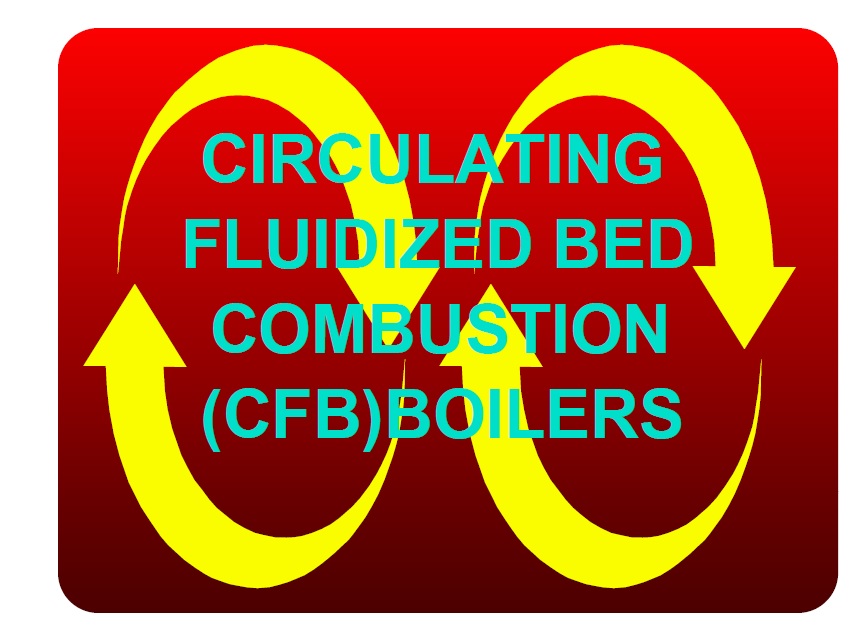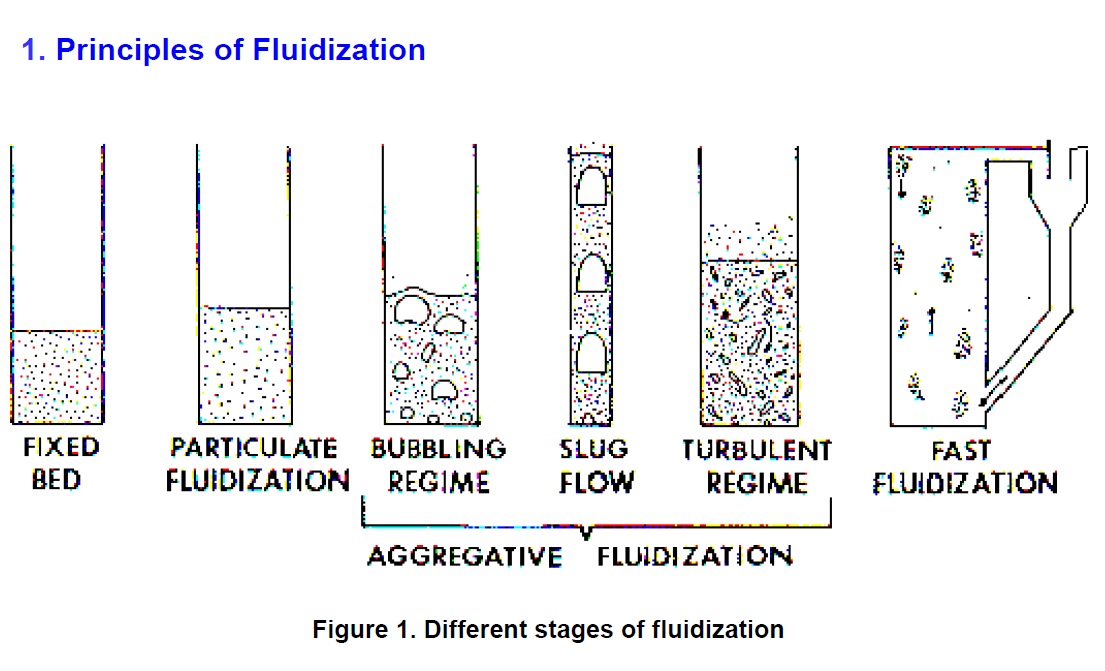What Is Fluidization
Topic 1: What Is Fluidization?
1. Principles of Fluidization
– Incipient fluidization
– Bubbling bed
– Slugging flow
– Turbulent regime
– Fast fluidization
2. Classification of Particles
 1.1 Incipient Fluidization
1.1 Incipient Fluidization
Fluidization is a process in which a bed of particles is converted to a fluid state by means of an upward flow of gas (or liquid);
When a fixed bed of particles is exposed to upward gas-flow, individual particles gradually tend to move apart and bed expansion becomes
noticeable (expanded bed). Pressure drop increases with rising gas flow;
At high airflow rates, a point is reached at which pressure drop becomes equal to bed weight, which enters into a state of incipient fluidization.
1.2 Bubbling Bed
Any additional airflow causes (inherently unstable) rising bubbles in bed
• The bubbles originate at distributor, detach from it, rise and inflate, merge or split, and eventually reach the surface of the bed.
• Distributor is a device that supports the bed & distributes airflow into the bed
Rising bubbles brings about a steady circulation of bed material
• push aside particles and aspire them in their wake;
• result in a thorough and steady mixing of bed materials;
• At sufficiently high bubbling rates, floating light or settling dense material are spread homogeneously throughout the bed.
A high rate of heat transfer in the bed is achieved
• The bed temperature tends to be strictly homogeneous in any case.
A high mass exchange between gas and fuel particles is also achieved
Probably, gas short-circuiting sometimes occurs to a certain extent
A bubbling bed resembles a boiling liquid, such as:
• The horizontal boundary between the fluidized bed and air phase above it;
• Fluid-like features of the bed, which can flow out of a hole or over a weir;
• The principle of communicating fluidized vessels;
• Light materials to float and dense materials to sink to achieve separation;
• The hydrostatic pressure, which rises with the depth in the bed;
• The steady but erratic movement of individual particles
1.3 Slugging Flow
FB is operated using a gas velocity well above incipient fluidization
• In fluidized state, pressure drop no longer increases significantly with gas flow.
When gas flow further increases, slugging may occur.
• slugging is a situation, occurring frequently in narrow slender beds;
• bubbles grow in size and coalesce so that they cover entire bed cross section;
• the slugs push bed material upwards until it rains through them, temporarily breaking up the slug;
• slugging regime is undesirable, because it is accompanied by erratic pressure shocks and a rather poor gas/particle contact
1.4 Turbulent Regime
When gas flow increases further, the bed is termed turbulent in a riser
1.5 Fast Fluidization
When gas flow increases even further, the bed is termed fast
CFB operates at velocities, corresponding to pneumatic transportation
2. Classification of Particles
Geldart’s classification
– Homogeneously fluidizable powders;
– Powders fluidizable with a bubbling regime, e.g. sand;
– Cohesive powders, difficult to fluidize, e.g. cement and fly-ash;
– Pellets, fluids;
– Others able with a bubbling regime, e.g. plastic pellets, corn.



